Last Chance to Catch NYC's Holiday Notalgia Train
We met the voices of the NYC subway on our nostalgia ride this weekend!


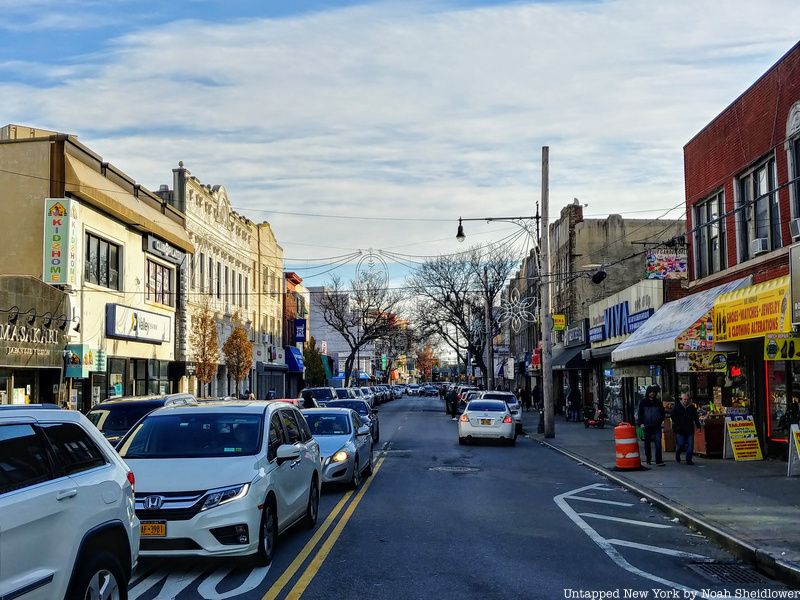
Sheepshead Bay in Brooklyn has often been overshadowed by the resorts and publicity of Brighton Beach, but this waterside neighborhood boasts a rich history and many cultural sites worthy of note. Sheepshead Bay once had its own Millionaire’s Row along the main waterfront road, Emmons Avenue, as well as a racetrack and summer hotels. Seafood restaurants were all over, piers were packed, and people came from far and wide to fish and see the sights. Over the past few decades, many of the neighborhood’s attractions shuttered, fishing along Sheepshead Bay started to decline, and some of the neighborhood’s tourist appeal was lost. Despite those changes, the neighborhood has retained much of its cultural history and diversity, in part thanks to a real estate boom during the 1970s. Today, the neighborhood houses a number of cultural enclaves, long-standing restaurants and institutions, and properties with fascinating histories. Here are the top 10 secrets of Sheepshead Bay!
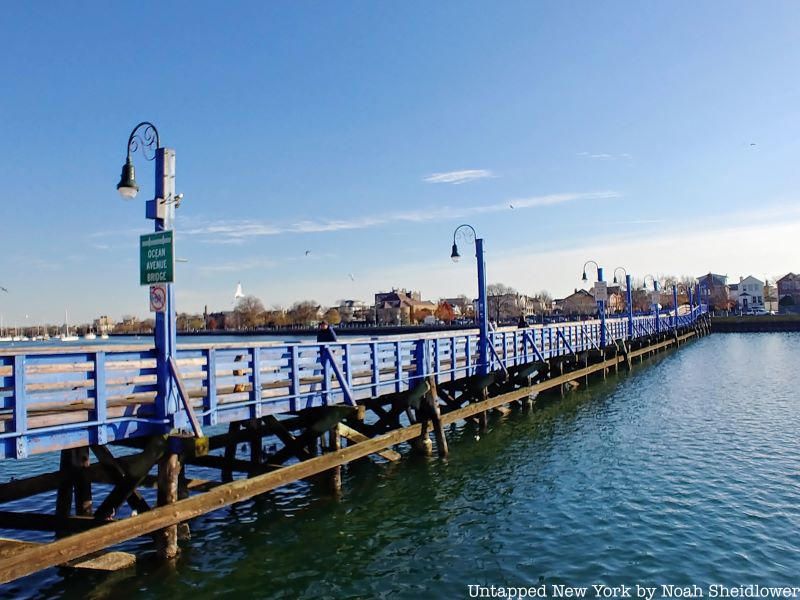
The neighborhood and the bay took their name from the sheepshead, a saltwater fish found in the bay’s waters. These fish were abundant off the shore until population numbers declined during the late 1800s. The fish, which grows to about 2.5 feet, has several rows of teeth resembling sheep. Today, most sheepshead live around southwest Florida, though some have recently been caught near Jamaica Bay. A hotel that opened in the neighborhood in 1844 shared the name as well.
Ever since pre-colonial times, Sheepshead Bay was a fishing town that attracted canoeists during the summer. Its bayside location, coupled with early infrastructural developments, contributed to its growth over time. despite often being overlooked for Brighton Beach and Manhattan Beach, waterside towns with more attractions and resorts to draw people in.

The Sheepshead Bay Race Track was a major Thoroughbred horse racing site that opened in 1880. It often competed with the Brighton Beach Race Course – home of the Brighton Derby – which opened a year prior in the back of the Brighton Beach Hotel. The Sheepshead Bay Race Track was led by figures including William Kissam Vanderbilt, who managed his family’s railroad investments, as well as the grandfather of Winston Churchill, Leonard Jerome. Prior to the race track’s opening, the area had become a hotel and restaurant destination, and by 1877, much of the area’s farmland had become residential developments. This growth was aided in part by the extension of the LIRR’s Manhattan Beach Branch.
People entered the club on Ocean Avenue between Avenues X and Y to see 1.5-mile head-to-head horse races on dirt and turf courses. With backing from August Belmont Jr., the race track held events including the Suburban Handicap, the Futurity Stakes, and the Lawrence Realization Stakes. The Coney Island Jockey Club opened the first turf course in the U.S. here in 1886, and it was believed that over 50 different stakes races were held over the years at the courses. A 1908 law that banned racetrack betting caused interest in the Sheepshead Bay Race Track to decline. Additionally, growing competition with Belmont Park further led to the demise of the famed track, which was torn down starting in 1919.
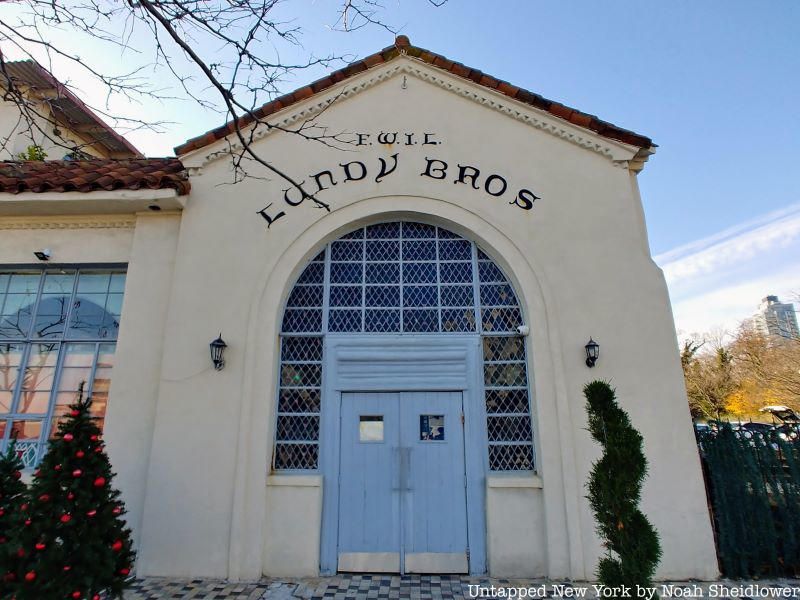
Lundy’s Restaurant was a cultural icon in Sheepshead Bay with quite a storied history. The seafood restaurant was opened in 1926 by Irving Lundy on the Sheepshead Bay waterfront. The Lundy family was heavily involved in the Brooklyn fish industry (as well as the Brooklyn Democratic Party), selling oysters, clams, and fish at shops in the neighborhood and nearby Coney Island. Irving Lundy began selling clams out of a pushcart, and by age 22, he opened his first clam bar before joining the Navy. After a kidnapping and other challenges, Lundy opened one of the area’s first seafood restaurants at East 21st Street and Ocean Avenue. He later relocated to Emmons Avenue by the Bayside Hotel and Casino. The new building was completed by 1935, and by then Emmons Avenue had become what the Brooklyn Daily Eagle called a “modern Venice.” The restaurant served raw clams on the half shell, Manhattan clam chowder, lobster, their “shore dinner” seafood platter, and huckleberry pie.
Lundy’s new location in a Spanish Colonial Revival building was a hit, despite some hiccups like threats of federal seizure and a ceiling collapse. Lundy’s at the time was one of the city’s largest restaurants, capable of seating between 2,400 and 3,000 customers. These operations were possible because of the restaurant’s large African American staff, which was an anomaly for the neighborhood. Lundy was not satisfied with operating just his restaurant; he bought more and more waterfront real estate until he owned all 70 waterfront properties between East 19th and East 29th Streets on Emmons Avenue.
Lundy’s business tactics displeased some of his staff, many of whom went on strike in 1946 and 1957 over union disagreements and wage disputes. The end of the first Lundy’s restaurant was tumultuous. Armed robberies, failed health inspections, Lundy’s death in 1977, and demographic changes in the neighborhood all led to the restaurant’s downfall. Lundy’s restaurant closed in 1979, and the building was soon after vandalized.
After at least a dozen attempts to reopen the restaurant, TAM Restaurant Group acquired Lundy’s and reopened it in 1995 in a smaller space. Whereas the fall of the original Lundy’s restaurant led to a decline in commerce along Emmons Avenue, the reopening triggered rapid development. A Times Square location opened briefly in 2001, though by 2007, the new Lundy’s was seized by the landlord. The name was preserved for the controversial Lundy’s Landing Shopping Plaza. The original building still remains today, even after suffering water damage from Hurricane Sandy. It is currently occupied by Momo Hibachi Steak House & Bar.
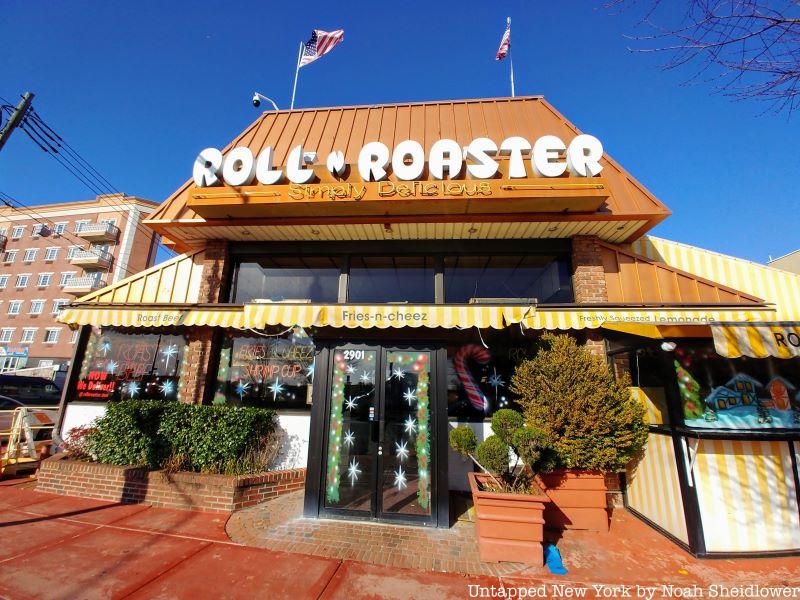
The golden age of Sheepshead Bay seafood restaurants may be gone, but its roast beef scene it still thriving. For 52 years, Roll-n-Roaster has been serving its famed roast beef sandwiches with or without gravy and cheese. The Emmons Avenue classic was opened by Brooklyn native Buddy Lamonica, and not much has changed since (other than the prices).
The interior consists mainly of old wood, with historic chandeliers and a giant orange and green menu, below which is a sign that reads “We cook to order and your wait will be tastefully rewarded.” Though known for its roast beef, the restaurant also has a selection of fried seafood, hamburgers, pizzas, and sides, including its famed corn fritters.

On the other edge of Sheepshead Bay on Avenue U is Brennan and Carr, which was opened in 1938 by George Brennan and Edward Carr. The Sullivan family, the current owners, took over in the 1970s. Alice Sullivan and her son Russ worked for the original owners. The restaurant started out with just roast beef sandwiches, but the menu has expanded since. The full-service restaurant has maintained its historic wooden interior with decades-old chandeliers and curtains. Over the years it has been featured on shows like “Man Vs. Food” and “Travel Thirsty.” The menu is grounded by its roast beef sandwich, still selling for under $10, but also includes burgers, chicken sandwiches, wing dings, and blueberry pie. The restaurant recently introduced roast pork loin to the menu, dipped in a savory au jus or served with caramelized onions and cheese.

Many New Yorkers would point to Brighton Beach as the epicenter of Eastern European life and culture, though nearby Sheepshead Bay also has a significant Eastern European population, made up of many people who arrived after the Holocaust and during the last two decades of the Soviet Union. Significant immigration from countries such as Russia, Ukraine, Uzbekistan, Kazakhstan, and Tajikistan began in the 1970s. At the time, rents were reasonable for Brooklyn, and many cultural centers were already in place in Brighton Beach. Another wave of immigrants settled in the area after the fall of the Soviet Union in 1991.
Today, much of this history is still retained in the people, shops, and cultural centers of Sheepshead Bay. Baku Palace is a restaurant and banquet hall serving Azerbaijan cuisine on Emmons Avenue, just down the road from NetCost Market, which has a large selection of Eastern European items. Nargis Cafe, a staple of Brighton Beach, recently moved to Sheepshead Bay along the main stretch of Sheepshead Bay Road, offering a wide selection of Uzbek specialties. Vanka Cafe is a popular restaurant specializing in Russian fare on Nostrand Avenue. There are also a handful of Georgian places in Sheepshead Bay, including Pirosmani, Apani, and Tasty Spot.

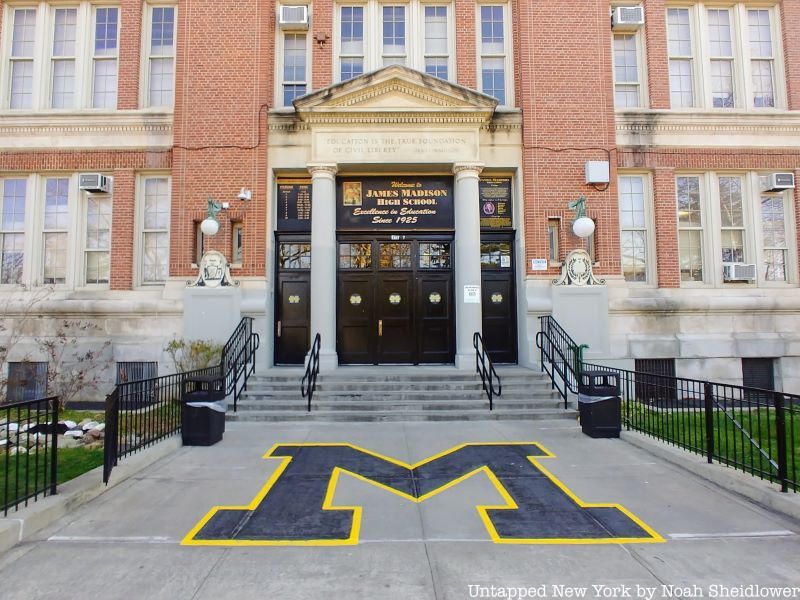
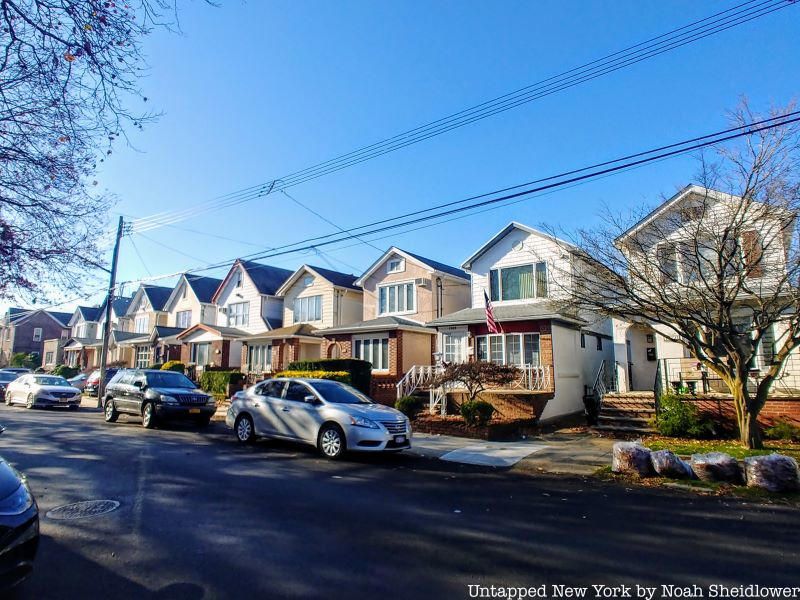
Madison is a quiet residential neighborhood within Sheepshead Bay located south of Midwood. The area is bordered north to south by Kings Highway and Avenue U, and east to west by Nostrand Avenue and Ocean Avenue. James Madison High School services much of the neighborhood, which was one of the last neighborhoods to be developed in Brooklyn beginning in 1877.
Most of the neighborhood consists of tree-lined streets and historic homes, many of which sell for well over $1 million. The neighborhood also includes a number of synagogues and Jewish community centers. The Wyckoff-Bennett-Mont Homestead, located at 1669 E 22nd St., dates back to 1766 and has changed hands four times since. The home played a significant role during the Revolutionary War, housing German soldiers who fought for the British. Many of the home’s original features, including woodwork, country kitchen, and front porch, still remain, and as of earlier this year, the home was on the market for $2.4 million.

The Holocaust Memorial Park in Sheepshead Bay is the city’s only public Holocaust memorial park. Located at the intersection of Emmons Avenue and Shore Boulevard, the park was designated by Mayor Koch in 1985. The memorial was dedicated over a decade later in 1997 to honor the area’s large Jewish population, many of whom were immigrants and survivors of the Holocaust.
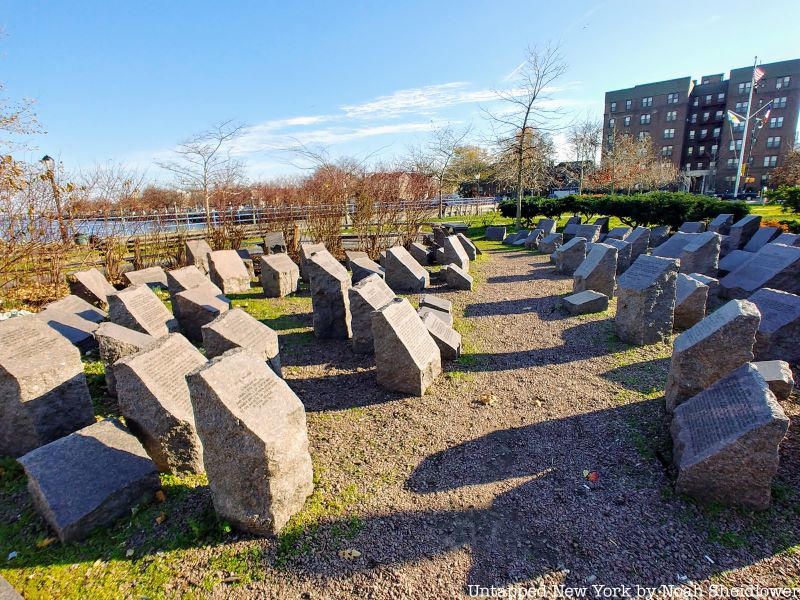
Landscape architect George Vellonakis designed the memorial as a 14 1/2-foot tower made of granite and exposed steel. At the top is a bronze “Eternal Flame,” as well as the word “Remember.” The base consists of three circular granite pedestals featuring the countries impacted by the Holocaust. Extending outwards is a 21-foot granite slab that outlines the history of the Holocaust. Near the memorial are over 200 granite markers that feature names and places associated with the Holocaust, each with a different form and size to depict the diversity of those who perished. These markers list names of concentration camps, events like Kristallnacht and the Warsaw Uprising, and figures like Anne Frank and Raoul Wallenberg.
The end of the slab reads: “This memorial is dedicated to the eternal memory of the six million Jewish men, women, and children methodically murdered by the Nazis and their collaborators during the Holocaust. To the five million other innocent human beings who were also murdered under German rule during World War II. To the heroes of the ghettos and the Jewish armed resistance. To the partisans and allied soldiers who fought for freedom. To those who survived the horrors and degradation of the Nazis. To the few righteous among the nations who risked their lives to shield those targeted for death. And to all those who wage battle for freedom and human dignity. Humanity must learn, understand, and remember so that it will never happen again. Remember!”

Concentrated along Avenue U in the Homecrest area of Sheepshead Bay is one of Brooklyn’s largest Chinese enclaves and Chinatowns. Situated right next to the predominantly Russian and Central Asian area of Sheepshead Bay, Homecrest is home to a vibrant, growing Chinese community. Many Chinese residents moved to Homecrest from Sunset Park further west, as well as from Manhattan’s Chinatown. Between 1990 and 2000, the Chinese population living along Avenue U rose by as much as 30%. Much of the Chinese community in Homecrest speaks Cantonese, and the main stretch of Avenue U Chinatown is about 10 blocks, with over a dozen restaurants
Golden Z restaurant specializes in Cantonese cuisine with very traditional dishes like roast pork over rice, razor clams with black bean sauce, and congee. Also serving classic Cantonese cooking is Wing Hing Seafood Restaurant, offering diners a selection of chef’s special seafood, poultry, and meat dishes as well as an array of dim sum and Cantonese noodles. Season Restaurant offers similar dishes to the aforementioned eateries but also presents some more creative dishes like veal chop, taro duck, and curry beef. Bakeries are also rather prominent on Avenue U. Good Family Bakery offers dim sum options like steamed rice rolls, har gow dumplings, and chicken feet, as well as hot and cold drinks.

Sheepshead Bay boasts many famous former and current residents, from TV personalities to famous athletes. Larry David was born and raised in a co-op apartment in Sheepshead Bay. Born to a German father and a Polish-Jewish mother, the comedian behind Seinfeld attended the now-defunct Sheepshead Bay High School. he left the neighborhood to attend the University of Maryland and enlist in the Army. David returned to his childhood home in 2015, which he hadn’t visited in half a century, describing in a 60 Minutes episode how he lived next to his aunt, uncle, and cousins in a crowded and loud apartment.
Judith Sheindlin, known better as Judge Judy, was also born and raised in Sheepshead Bay in a German-Russian-Jewish home. Her father was a dentist while her mother was an office manager. She graduated from James Madison High School in Midwood, which was also attended by Bernie Sanders and Chuck Schumer. The late Vince Lombardi, former head coach of the Green Bay Packers, grew up on 2542 E. 14th St. and sometimes helped his father at the family’s local barbershop. The drummer and bandleader Buddy Rich also got his musical start growing up in Sheepshead Bay.
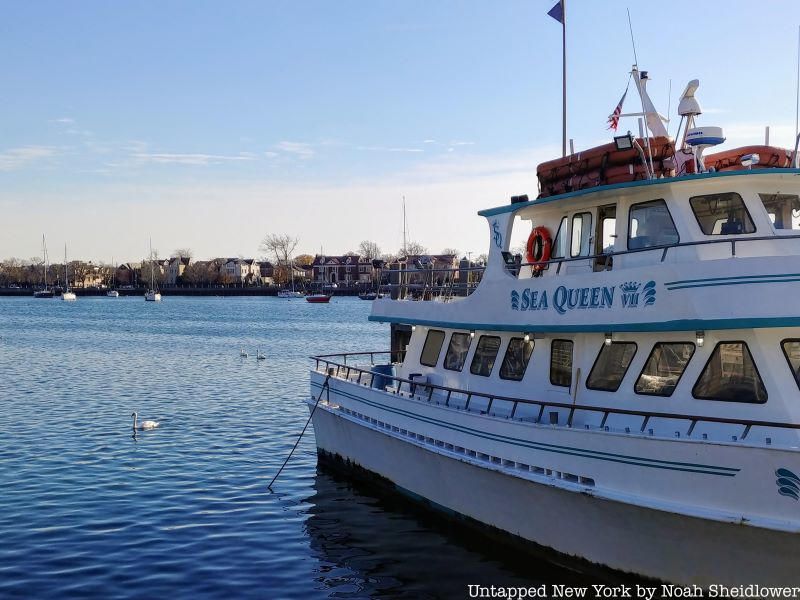
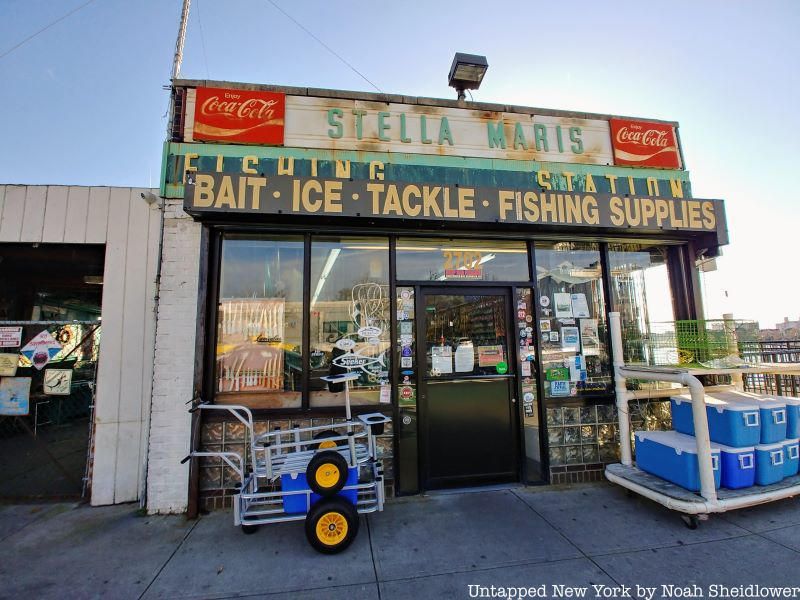
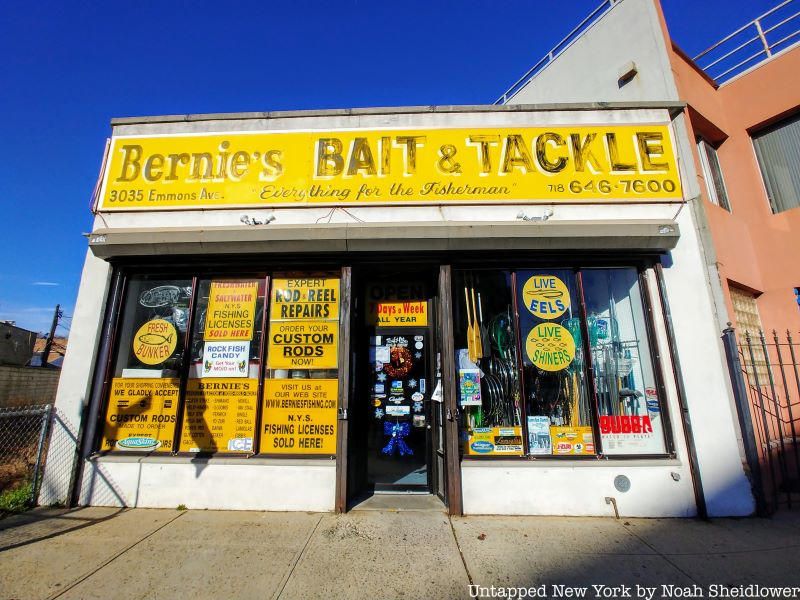
Sheepshead Bay hosts some of Brooklyn’s largest bait and tackle stores, including Bernie’s on Emmons Avenue. Open for over five decades, Bernie’s has one of the borough’s largest selections of fishing rods, reels, and fishing tackle, including live eels, worms, and shiners. Down the street from Bernie’s is Stella Maris Bait & Tackle, which has been open since 1947. The store includes a wide selection of fishing poles, traps and nets, filet knives, and gear for amateurs and professionals alike. The store’s name comes from the Latin for Star of the Sea, a name for the Virgin Mary.
Sheepshead Bay also offers a selection of maritime activities including the Sea Queen VII. The fishing boat offers half-day and night excursions for experienced fishermen and inexperienced people looking to learn. Marilyn Jean Fishing, which also departs from Emmons Avenue, departs on daily fishing trips to areas such as Rockaway Beach, Jamaica Bay, and Sandy Hook. Trips run from 7 a.m. to 3 p.m. and from 7:30 p.m. to 12:30 a.m., and the boat also is available for private fishing charters or sightseeing tours. There are a handful of other fishing boats including Capt. Dave Fishing, the Midnight Fleet, and RockFish Charters.
Next, check out the Top 10 Secrets of Brighton Beach!
Subscribe to our newsletter